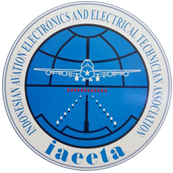SLIP HANDLING ON CONVEYORS TO EXTEND THE LIFE OF CONVEYORS AT THE DEPARTURES TERMINAL
DOI:
https://doi.org/10.52989/jaet.v3i2.102Kata Kunci:
belt conveyor, slip belt, maintenanceAbstrak
The departure terminal’s Abdulrachman Saleh Malang Airport has facilities as an improvement in services for airplane passengers, such as aviobridges, escalators, travelators, elevators, and conveyors. Conveyors are mechanical systems that transfer luggage considerably from one location to another. To facilitate routing procedures, an effective model for conveyor operations must be developed, as well as the maintenance operation. This study aims to determine the consequences of lack of maintenance on the conveyor belt, namely the occurrence of slack in the belt so that it continues to experience abrasions on the sides of the conveyor and tears on the edges of the belt. The tear causes the fibers to unravel so that slip occurs between the belt and the upper idler shaft (carry idler) so that the idler cannot rotate. This causes the conveyor belt to run and malfunction. This research uses a qualitative method of conducting an exploratory study of the conveyor belt using experimental description research by describing and analyzing the existing conditions on the conveyor. The result is that there are belt fibers that cause slippage on the conveyor. Handling that can be done is cutting the fiber belt. The conclusion is that many factors can cause slippage on the conveyor belt, such as too heavy a load, old belt age, and the distance between the collecting belt conveyor and the transfer line conveyor. Maintenance can be done on the equipment to avoid slippage on the conveyor. Conveyor maintenance activities consist of two types, namely unplanned maintenance and planned maintenance. Unplanned maintenance is also called reactive maintenance or emergency maintenance.
Unduhan
Referensi
Bebic, M. Z., & Ristic, L. B. (2018). Speed controlled belt conveyors: Drives and mechanical considerations. Advances in Electrical and Computer Engineering, 18(1), 51–60. https://doi.org/10.4316/AECE.2018.01007
Bhatt, P., Mehar, H., & & et al. (2019). Electrical Motors for Electric Vehicle – A Comparative Study. SSRN Electronic Journal. https://doi.org/10.2139/ssrn.3364887
Blazej, R., & Jurdziak, L. (2017). Condition-Based Conveyor Belt Replacement Strategy in Lignite Mines with Random Belt Deterioration. IOP Conference Series: Earth and Environmental Science, 95(4). https://doi.org/10.1088/1755-1315/95/4/042051
Franciosi, C., Di Pasquale, V., Iannone, R., & Miranda, S. (2020). Multi-stakeholder perspectives on indicators for sustainable maintenance performance in production contexts: an exploratory study. Journal of Quality in Maintenance Engineering, 27(2), 308–330. https://doi.org/10.1108/JQME-03-2019-0033
Kristian, F. P., Mulyono, J., & Santosa, H. (2021). Preventive Maintenance Scheduling on Belt Conveyor Using Failure Mode Effect and Criticality Analysis. Jurnal Sistem Teknik Industri, 23(1), 111–120. https://doi.org/10.32734/jsti.v23i1.4368
Król, R. (2017). Studies of the Durability of Belt Conveyor Idlers with Working Loads Taken into Account. IOP Conference Series: Earth and Environmental Science, 95(4). https://doi.org/10.1088/1755-1315/95/4/042054
Küçüktabak, E. B., Kim, S. J., Wen, Y., Lynch, K., & Pons, J. L. (2021, December 1). Human-Machine-human interaction in motor control and rehabilitation: a review. Journal of NeuroEngineering and Rehabilitation, Vol. 18. BioMed Central Ltd. https://doi.org/10.1186/s12984-021-00974-5
Lubis, F., Lubis, S., Siregar, M. A., & Damanik, W. S. (2022). Pelatihan Keamanan Dalam Merancang Prototype Belt conveyor. ABDI SABHA (Jurnal Pengabdian Kepada Masyarakat), Vol. 3, pp. 146–153. https://doi.org/10.53695/jas.v3i1.597
Maidi. (2022). Analisa Penyebab Kerusakan dan Perbaikan pada Belt Conveyor di PT. MIFA Bersaudara. Jurnal Mahasiswa Mesin UTU (JMMUTU), 1(1), 19–26.
Martinetti, A., van Dongen, L. A. M., & Romano, R. (2017). Beyond Accidents: A Back-Analysis on Conveyor Belt Injury for a Better Design for Maintenance Operations. American Journal of Applied Sciences, 14(1), 1–12. https://doi.org/10.3844/ajassp.2017.1.12
Rani, N. A. A., Baharum, M. R., Akbar, A. R. N., & Nawawi, A. H. (2015). Perception of Maintenance Management Strategy on Healthcare Facilities. Procedia - Social and Behavioral Sciences, 170, 272–281. https://doi.org/10.1016/j.sbspro.2015.01.037
Rizal, M., Marasabessy, F., Ahadian, E. R., & Ramadhani, S. A. (2018). Dukungan Moda Transportasi Udara Dalam Pengembangan Kawasan Industri Buli Kabupaten Halmahera Timur. Journal of Science and Engineering, 1(2), 1–10. https://doi.org/10.33387/josae.v1i2.962
Sorouri, M., & Vyatkin, V. (2016). Intelligent product and mechatronic software components facilitating mass customization in collaborative manufacturing systems. IFIP Advances in Information and Communication Technology, 480, 394–407. Springer New York LLC. https://doi.org/10.1007/978-3-319-45390-3_34
Szurgacz, D., Zhironkin, S., Vöth, S., Pokorný, J., Sam Spearing, A. J. S., Cehlár, M., … Sobik, L. (2021). Thermal imaging study to determine the operational condition of a conveyor belt drive system structure. Energies, 14(11). https://doi.org/10.3390/en14113258
Trojan, F., & Marçal, R. F. M. (2017). Proposal of Maintenance-types Classification to Clarify Maintenance Concepts in Production and Operations Management. Journal of Business and Economics, 8(7), 560–572. https://doi.org/10.15341/jbe(2155-7950)/07.08.2017/005
Van Zyl, G., & Al-Sahli, A. (2013). Failure analysis of conveyor pulley shaft. Case Studies in Engineering Failure Analysis, 1(2), 144–155. https://doi.org/10.1016/j.csefa.2013.04.011
Webb, C., Hodkiewicz, M., Khan, N., Muller, S., & Wilson, R. (2013). Conveyor Belt Wear Life Modelling. CEED Seminar Proceedings 2013, 25–30. Retrieved from http://www.ceed.uwa.edu.au/__data/page/185971/BHPBIO.Conveyor_Belt_Wear_Life.Webb.pdf
##submission.downloads##
Diterbitkan
Cara Mengutip
Terbitan
Bagian
Lisensi
Hak Cipta (c) 2023 Arka Alrora Harahap, Ni Putu Heni Handayani

Artikel ini berlisensi Creative Commons Attribution-NonCommercial 4.0 International License.












_1.png)




